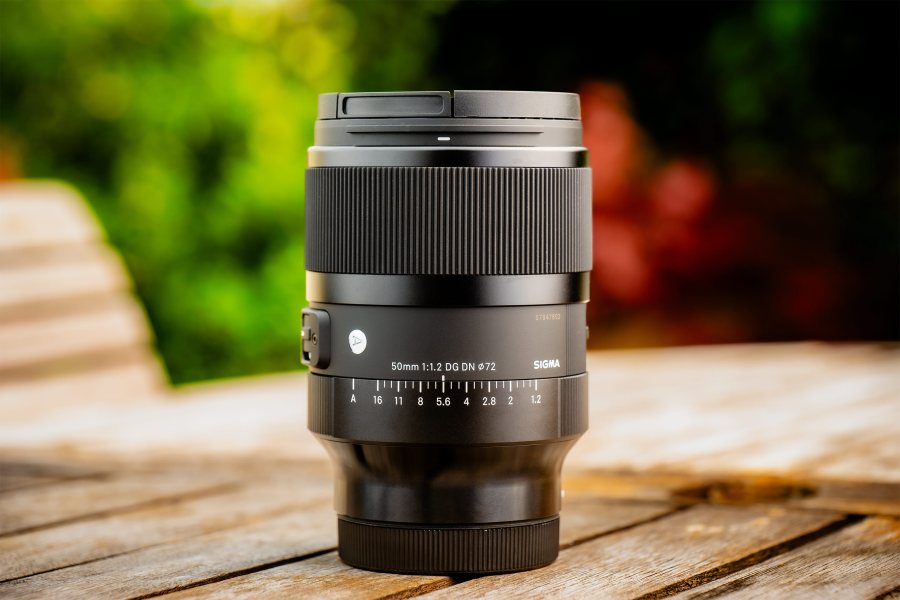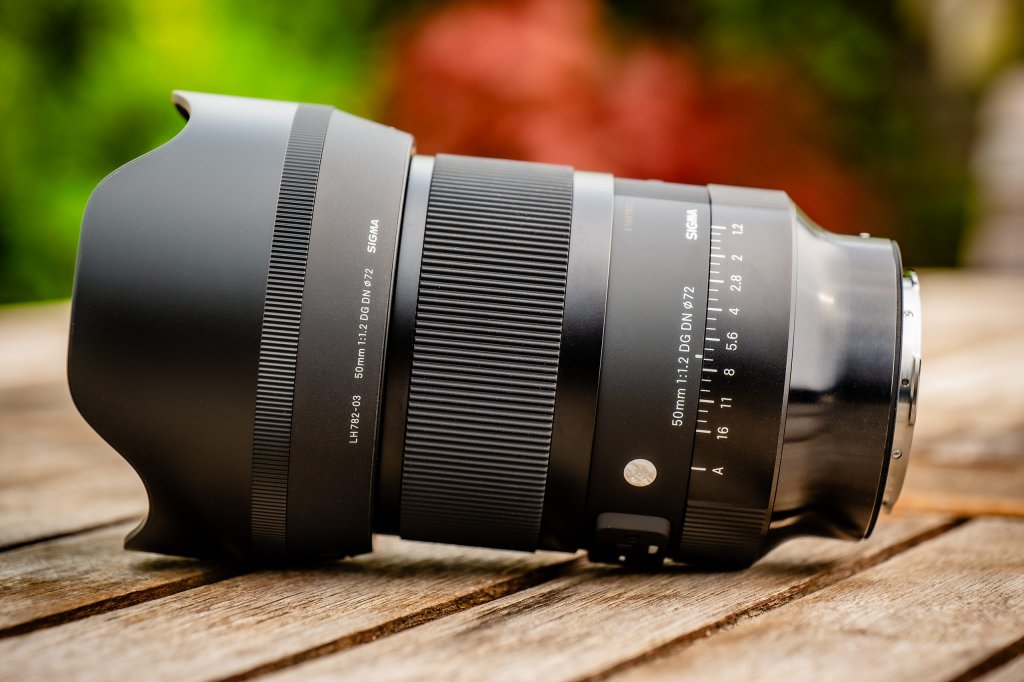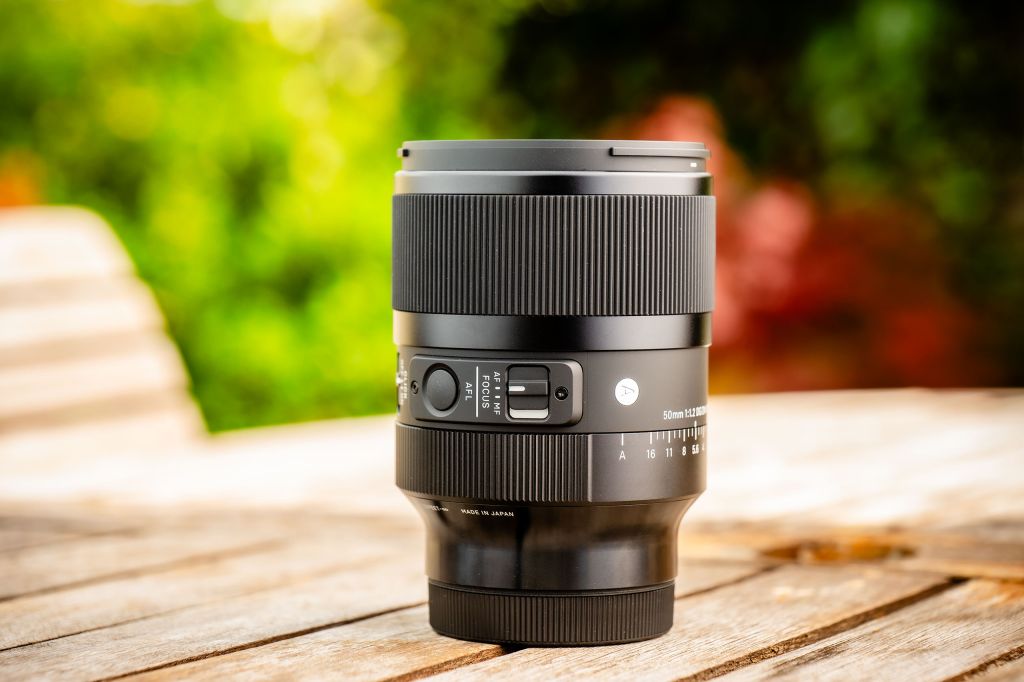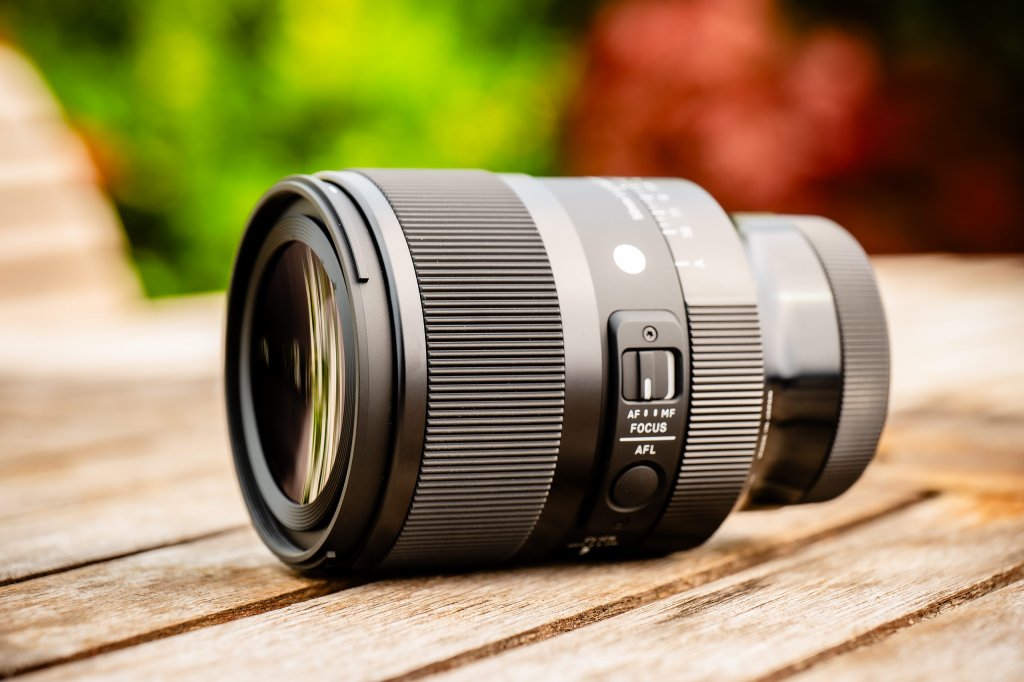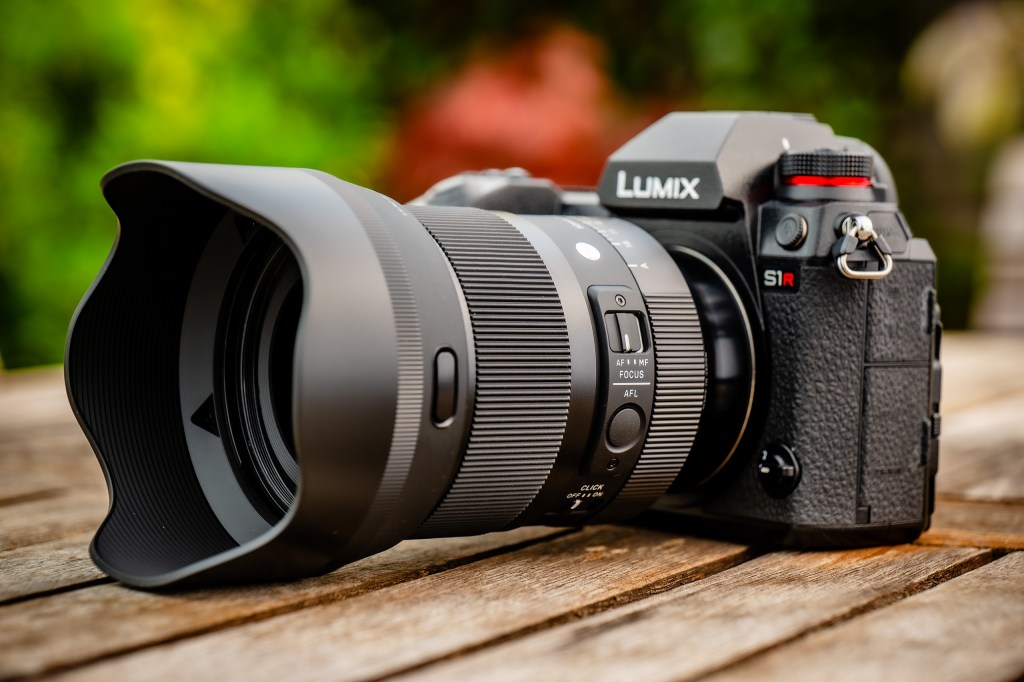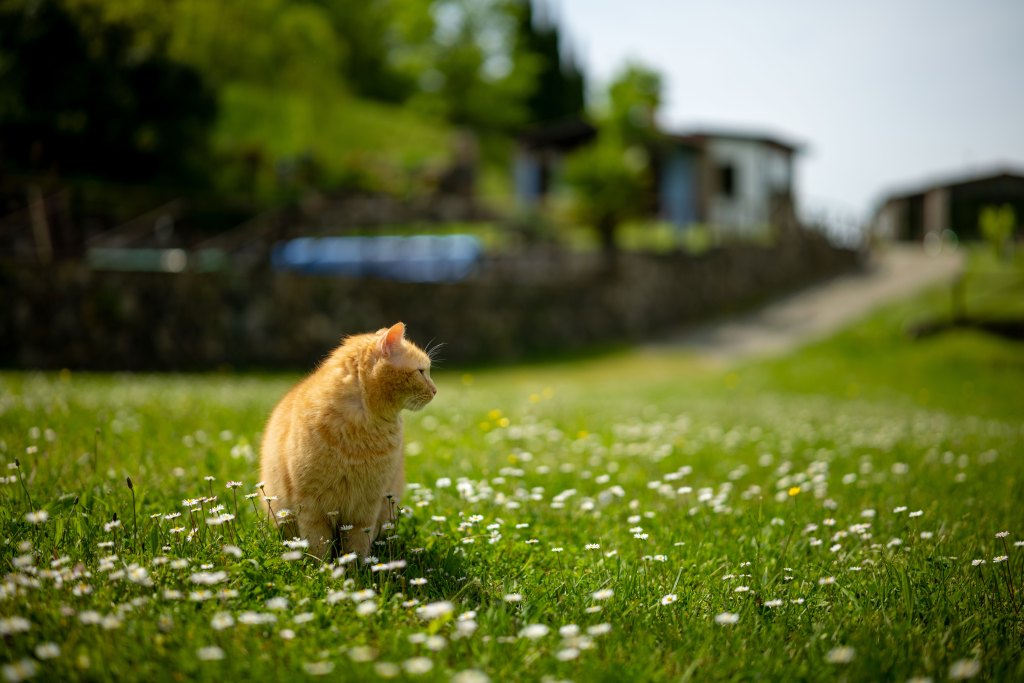Amateur Photographer verdict
This Sigma 50mm F1.2 DG DN Art has the potential to produce images you can’t get with many other lenses. It comes at a price that, while hefty, is much less than you can get that look for elsewhere.- Super-wide aperture
- Great resolution and contrast wide open
- Well-featured lens
- Excellent value
- Lightweight for what it is, but still a heavy lens
- Small for the aperture, but still a large lens
- Care needed to get focus in the right place at f/1.2
There are a couple of points regarding the Sigma 50mm F1.2 DG DN Art lens that immediately got my attention. The first is that it has an exceptionally large maximum aperture, and the second is that costs considerably less than similar lenses offered by other manufacturers. These two things combined are either a cause for impending disappointment, or for great joy.
Sigma 50mm F1.2 DG DN Art at a glance:
- Large-aperture standard prime
- For full-frame cameras
- 67mm filter thread
- 40cm minimum focus
- 81mm diameter x 108.8mm length, 745g
- Sony E and L-mount
- www.sigmauk.com
If it really is a good lens for much less than we’d expect to pay, then we might all celebrate. But usually lower-cost optics with such ambitious openings fail to provide anything like a sharp, well corrected image, and make too many compromises to get the f/1.2 marking on the barrel. This is Sigma though, and it’s an Art lens. Judging by recent form, I’d put my money on this being a bit special.
Sigma 50mm F1.2 DG DN Art – Features
It’s pretty clear from the start that there’s a lot of new stuff in the lens, a good deal of which it has inherited from Sigma’s other recent lenses in the Art series. You will notice immediately that the lens is somewhat smaller than you may have expected for such a wide aperture, and that it weighs less.
Modern lenses for mirrorless cameras tend to be smaller and lighter of course, which is one of the great benefits of dropping the mirror box we had in DSLRs. But this model manages to house its 17 elements in 12 groups in a construction that weighs 745g and which measures 108.8mm long and just 81mm across.
In fairness, Sony’s FE 50mm F1.2 GM with the same aperture is only very slightly heavier and broader. But similar models from Canon and Nikon weigh significantly more.
Sigma says it has kept the size down through the use of its dual HLA (High-response Linear Actuator) system that sees two motors shifting a pair of lens groups to affect focusing. A total of four aspherical elements in the construction will also play their part in reducing the size.
Another notable element of the specification is the iris. Not only does the aperture open to f/1.2, it is also made using 13 blades. This is the first time Sigma has used a 13-bladed iris, which is an indication of how much the designers want this to be a special lens.
Of course when we use the aperture wide open, it doesn’t matter how many blades it has, as the edges of the blades are pulled back out of the light path. But as soon as we begin to close the iris, we should start to see the benefits on the shapes of the out-of-focus highlights. Or at least, we should note that they remain rounded and not distracting.
The minimum aperture is a slightly modest f/16, but that’s to be expected as the maximum aperture is so wide, and the filter thread is an equally modest 72mm. There is no optical stabilisation in this lens, as Sigma tends to reserve it for long lenses, but almost all the cameras with which the lens is compatible will have their own sensor-based stabilisation systems.
Sigma 50mm F1.2 DG DN Art – Build and Handling
This Sigma 50mm F1.2 DG DN Art model continues to justify the expectation that Sigma Art lenses will be very well made. It looks very sleek too, with its matt black barrel and rings giving way to a glossy tapered ending near the mount. We’ll be able to tell the difference between the focus and aperture rings not only because of the good distance between them, but also because one is significantly wider than the other.
Despite it being relatively lightweight compared to some similar lenses, it is still a significant addition to any camera. I used the L-Mount version on the Panasonic Lumix S1R and found the two beasts balanced well but made a weighty combination. I rather liked the weight, but it won’t be to everyone’s taste.
Mounted on the less well-nourished Panasonic Lumix S5ll, the camera and lens have equal mass, but the lens makes the pairing a little front-heavy. Noticeably, but not uncomfortably so.
I rarely look through a viewfinder these days, but I found the lens very comfortable to hold away from my face as the tapered barrel at the camera end gives us an extra grip for the fingers. The same is true when holding the camera/lens to the eye. That slender end is very nicely shaped.
The settings on the manual aperture ring are marked in third-stops and are equally spaced across the scale. In addition to the marked apertures we also have an A setting for Auto, which allows apertures to be controlled via the camera body.
The ring clicks convincingly at every third-stop. But those who prefer silence can deactivate the clicks, which enables the ring to turn without spoiling your video’s soundtrack and to create smoother transitions. There’s also a lock to prevent a ring set to the A position from slipping into manual aperture mode, and vice versa.
Sigma 50mm F1.2 DG DN Art – Autofocus
We have an AF/MF switch on the side of the barrel, but the focus modes can equally be controlled via the camera’s own focus options. In AF mode there’s no clutch for making manual adjustments, but in MF mode a press of the camera’s AF-On button will bring the autofocus temporarily to life. There’s also an AF-Lock button on the lens to help us latch on to a subject when we want to recompose the shot.
The manual focus ring is very nicely tensioned and fully integrated with the scale and focus assist tools of the cameras I used it on. AF speed is excellent too, and doesn’t hinder the performance of the camera. I also found all the camera’s AF options, such as distance limiters, focus transition and ring customisation, are compatible with the lens.
Sigma 50mm F1.2 DG DN Art – Performance
While I love a very wide aperture, my hopes for a truly sharp image when we get to extremes such as f/1.2 are tempered by experience, and the knowledge that producing good resolution with wide apertures is difficult to do. In the face of frequent disappointment I always remain optimistic, though, because occasionally things work out well. And this is one of those occasions.
I’m really pleased with the way this lens performs wide open. Images are delightfully sharp, and resolution and contrast are both high.
At closer distances we really need to be careful about where we put our AF point, so that it hovers exactly over the part of the scene we want to be sharp. I suspect that user error will account for more missed opportunities than can be blamed on the camera or the lens. The tiny depth-of-field created in scenes where the subject is even ten feet away is such that off-target shooting will be completely obvious.
When we get it right though, the results are stunning. Portraits shot at the widest aperture draw our attention directly to the eye even when the subject isn’t large in the frame, and the focus roll-off is graciously smooth in its graduation. One well-focused shot that makes the most of the characteristics of this lens will justify its price over a f/1.4 or f/1.8 model immediately.
The lens is very good at f/1.2, but as you’d expect things get even better as we close the aperture through the more regular f/stop settings, until we reach the peak at around f/5.6 and f/8. By this stage, the obvious vignetting that darkens the corners by about a stop has disappeared on its own, without the need for the built-in profile that will correct it automatically in Photoshop/Lightroom.
The green/blue chromatic fringing that we might notice around high contrast edges also disappears as we close down, and you should find it gone by f/2.8. But it’s never very obvious.
Theatrical film makers might be disappointed how difficult it is to create flare in this lens, even with the sun in the frame, so mist and low-contrast filters may need to be used to compensate for the excellent coatings on the elements. It’s a very clean lens.
Sigma 50mm F1.2 DG DN Art – Verdict
There was almost no point in going to all the effort of testing this lens. I could instead have just written a wish-list and a review full of the things I’d hoped this lens would do. I almost knew from the start, as all my experiences with Sigma Art lenses in recent years have been very positive, so I had an idea of what to expect. And I’m glad to say my hopes and expectations match very closely to what this lens has produced, and it has made me very happy.
It is a very nice lens to use, and it makes life easy with its comfortable handling and the careful arrangement of its feature access points, plus it has all the features one could expect. But it is the results though that set it apart and which make it worth buying.
You may not need the f/1.2 aperture all the time, and when you don’t you’ll find a 50mm lens that offers exceptional sharpness and resolution. When you do want that f/1.2 aperture, though, and when you remind yourself to be doubly careful with the placement of your focus point, you will be amazed and delighted. The people who say a new bit of kit won’t make your pictures more interesting are living in a world of ordinary lenses.
This Sigma 50mm F1.2 DG DN Art certainly has the potential to produce images you can’t get with many other lenses, and at a price that’s hefty but much less than you can get that look for elsewhere. Now I want a 75mm F1.2 DG DN Art to go with it.
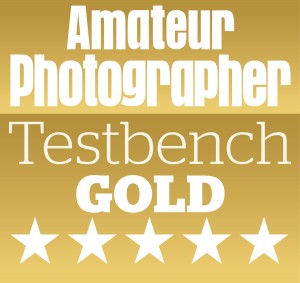
Full Specification
| Price | £1299 |
| Filter Diameter | 72mm |
| Lens Elements | 17 |
| Groups | 12 |
| Diaphragm blades | 13 |
| Aperture | f/1.2 – f/16 |
| Minimum focus | 40cm |
| Length | 108.8mm |
| Diameter | 81.0mm |
| Weight | 745g |
| Lens Mount | Sony L (full-frame), L-Mount |
| Included accessories | Caps, hood |
Related reading:
- Sigma 50mm F1.4 DG DN Art review
- Sony FE 50mm F1.2 GM review
- Sigma 85mm F1.4 DG DN Art Review
- Best lenses for low light from just £109
Follow AP on Facebook, Twitter, Instagram, YouTube and TikTok.

